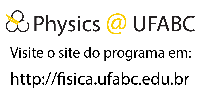Banca de QUALIFICAÇÃO: JUAN DAVID FONSECA JAMAICA
Uma banca de QUALIFICAÇÃO de DOUTORADO foi cadastrada pelo programa.DISCENTE : JUAN DAVID FONSECA JAMAICA
DATA : 17/12/2024
HORA: 14:00
LOCAL: videoconferência
TÍTULO:
QUANTUM AND RELATIVISTIC IMPLICATIONS IN THE PRODUCTION OF ENTANGLEMENT FOR WITNESS AND EMERGING PARTICLES
PÁGINAS: 50
RESUMO:
The QED scattering process between two electrons, e−e−→e−e−e^{-}e^{-} \rightarrow e^{-}e^{-}, is considered, where the electrons are initially entangled in spin with an ancillary particle, CC, that does not participate in the collision. The final state of CC is analyzed, revealing that it encodes information about the scattering process ABAB through the expectation value along the zz-axis for the three-particle entanglement WW, also known as the Wigner state.
This result holds to first order in perturbation theory, where a non-relativistic approximation allowed the separation of interactions into Coulomb, spin-spin, and spin-orbit contributions. The maximum value of the entanglement indicator was achieved for the spin-orbit interaction, while the Coulomb interaction contributed no entanglement.
In the next order of perturbation theory, the optical theorem and the unitarity of quantum field theory ensure that loop corrections cancel these contributions, leaving particle CC with no information about the scattering process. The von Neumann entropy is also computed as an alternative measure to characterize these entanglements.
MEMBROS DA BANCA:
Presidente - Interno ao Programa - 3065679 - BRENO MARQUES GONCALVES TEIXEIRA
Membro Titular - Examinador(a) Interno ao Programa - 1939597 - ANDRE GUSTAVO SCAGLIUSI LANDULFO
Membro Titular - Examinador(a) Externo ao Programa - 1143302 - FAGNER MURUCI DE PAULA
Membro Suplente - Examinador(a) Externo à Instituição - BRIGITTE HILLER




